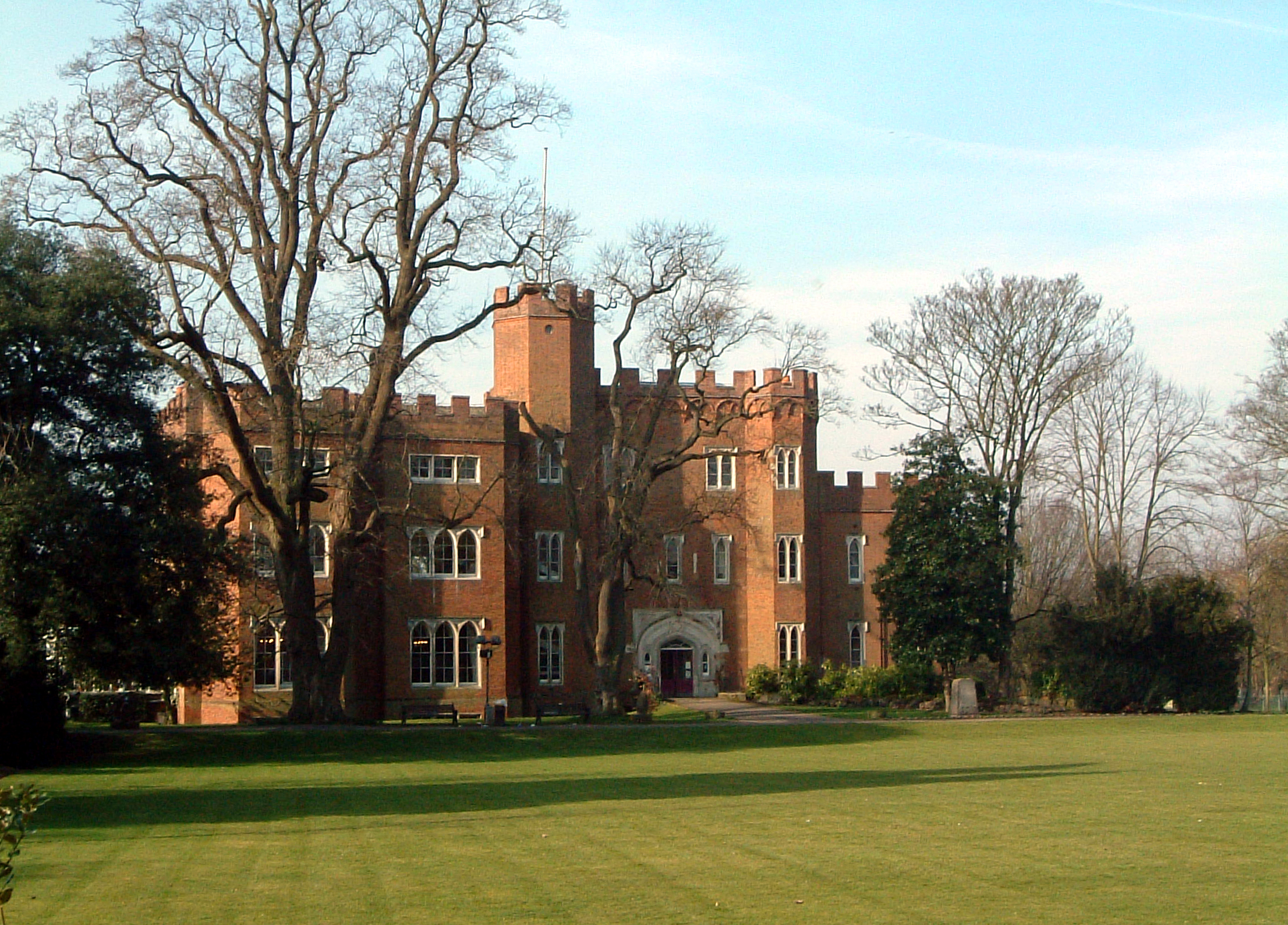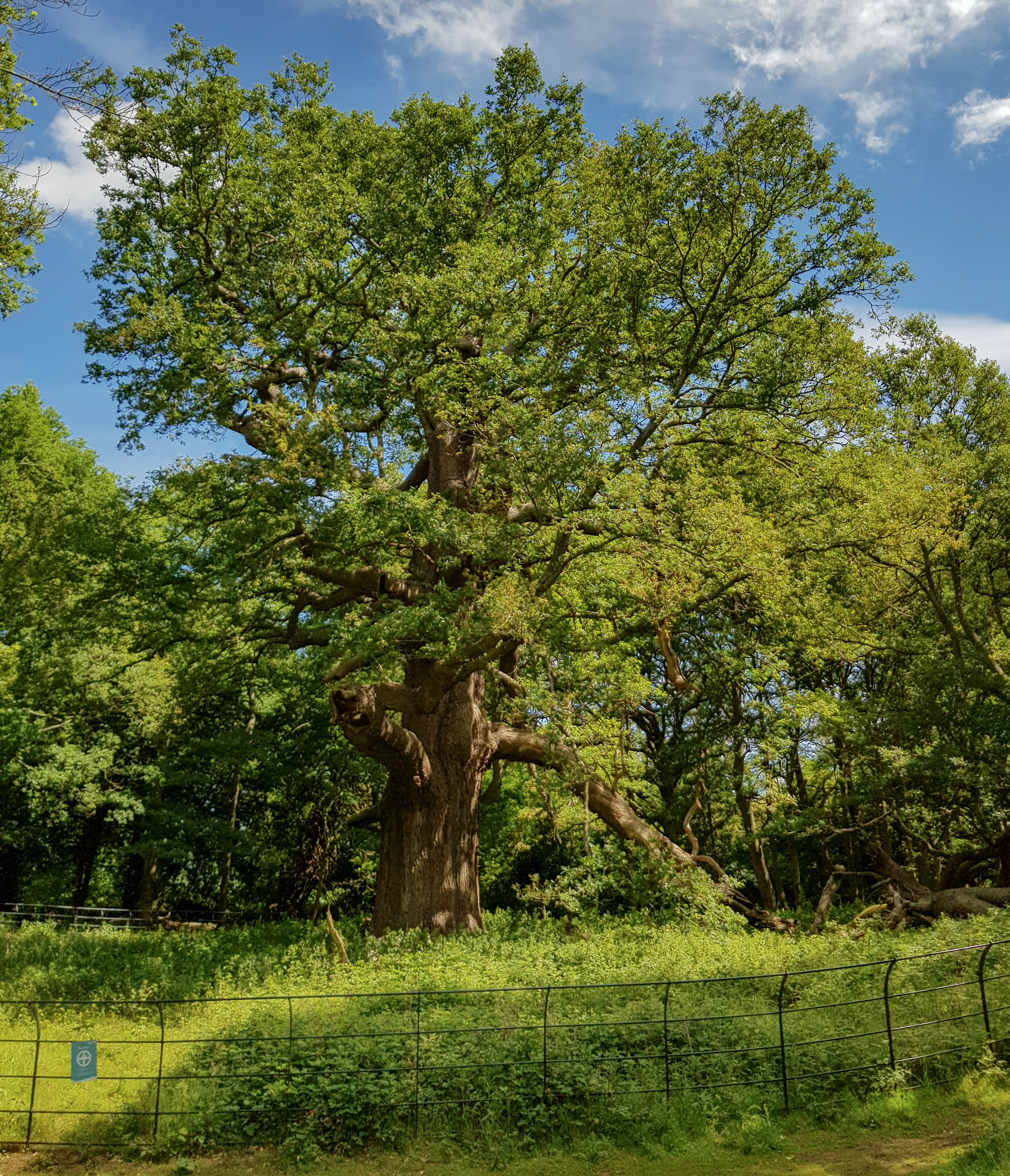|
Hertingfordbury
Hertingfordbury is a small village in Hertfordshire, England, close to the county town of Hertford. It was mentioned in the Domesday Book of 1086. Hertingfordbury is also the name of a neighbouring civil parish, which does not contain the village. Hertingfordbury village is within the Castle ward of Hertford Town Council. The population of the civil parish as of the 2021 census was 689. Location Hertingfordbury lies one mile west of Hertford on the A414 road. Ribbon development along that road has yet to reach the village, which retains a rural character. The village straddles the River Mimram, on which was built a water mill in the 18th century, and lies just north of the River Lea. The northern boundary of the village is Panshanger Park, with its Great Oak, considered by some to be the oldest oak in England. It is situated within the Castle ward of Hertford Town Council, the London metropolitan green belt and is a named conservation area of East Herts District Council ... [...More Info...] [...Related Items...] OR: [Wikipedia] [Google] [Baidu] |
Hertford
Hertford ( ) is the county town of Hertfordshire, England, and is also a civil parish in the East Hertfordshire district of the county. The parish had a population of 26,783 at the 2011 census. The town grew around a Ford (crossing), ford on the River Lea, near its confluences with the rivers River Mimram, Mimram, River Beane, Beane, and River Rib, Rib. The Lea is navigable from the River Thames, Thames up to Hertford. Fortified settlements were established on each side of the ford at Hertford in 913AD. The county of Hertfordshire was established at a similar time, being named after and administered from Hertford. Hertford Castle was built shortly after the Norman Conquest in 1066 and remained a royal residence until the early seventeenth century. Hertfordshire County Council and East Hertfordshire District Council both have their main offices in the town and are major local employers, as is McMullen's Brewery, which has been based in the town since 1827. The town is also pop ... [...More Info...] [...Related Items...] OR: [Wikipedia] [Google] [Baidu] |
Letty Green
Letty Green is a village in the parish of Hertingfordbury, Hertfordshire, England. St John’s Church, Letty Green, the deconsecrated former parish church, is a grade II listed building In the United Kingdom, a listed building is a structure of particular architectural or historic interest deserving of special protection. Such buildings are placed on one of the four statutory lists maintained by Historic England in England, Hi ..., and Woolmer's Park country house is grade II* listed and was the source for the name of Woolmers Estate in Tasmania. References Villages in Hertfordshire East Hertfordshire District {{Hertfordshire-geo-stub ... [...More Info...] [...Related Items...] OR: [Wikipedia] [Google] [Baidu] |
William Cowper, 1st Earl Cowper
William Cowper, 1st Earl Cowper, ( ; 10 October 1723) was an English politician who became the first Lord High Chancellor of Great Britain. Cowper was the son of Sir William Cowper, 2nd Baronet, of Ratling Court, Kent, a Whig member of parliament of some mark in the two last Stuart reigns. Career and titles Cowper was educated at St Albans School in Hertfordshire, and was later to acquire a country estate in the county and represent the county town in Parliament. He was admitted to Middle Temple on 18 March 1681/82, was called to the bar on 25 May 1688, and built up a large practice. He gave his allegiance to the Prince of Orange on his landing in England in 1688, and was made King's Counsel and recorder of Colchester in 1694. Cowper had the reputation of being one of the most effective parliamentary orators of his generation. He lost his seat in parliament in 1702 owing to the unpopularity caused by the trial of his brother Spencer Cowper on a charge of murder. Lord K ... [...More Info...] [...Related Items...] OR: [Wikipedia] [Google] [Baidu] |
Benjamin Truman
Sir Benjamin Truman (1699/1700 – 20 March 1780) was an English entrepreneur and brewer during the 18th century, responsible for the expansion of the Truman Brewery in the Brick Lane area of east London. Biography Truman followed in the footsteps of his father and grandfather, both named Joseph Truman. Joseph Truman the elder inherited the Lolsworth Field brewery, William Bucknall's Brewhouse, in 1694, and took his son into partnership in 1716 before dying in 1719. Benjamin Truman joined the firm in 1722, and proved himself a shrewd businessman: :"On the birth of the Duchess of Brunswick, granddaughter of George II, in August 1737, the Prince of Wales ordered four loads of faggots and a number of tar barrels to be burnt before Carlton House to celebrate the event, and directed the brewer of his household to place four barrels of beer near the bonfire for the use of those who chose to partake of the beverage. The beer proved to be of inferior quality and the people threw it i ... [...More Info...] [...Related Items...] OR: [Wikipedia] [Google] [Baidu] |
Jane Wenham (alleged Witch)
Jane Wenham (died 1730) was one of the last people to be condemned to death for witchcraft in England, although her conviction was set aside. Her trial in 1712 is commonly but erroneously regarded as the last witch trial in England. Background The twice-married Jane Wenham, of Walkern, Hertfordshire, had apparently separated from her second husband and about 1710 brought a charge of defamation against a farmer, John Chapman, in response to an accusation of witchcraft. The local justice of the peace, Sir Henry Chauncy, referred the matter to the Rev Godfrey Gardiner, the rector of Walkern. She was awarded with a shilling, though advised to be less quarrelsome. She was disappointed with this outcome, and it was reported that she had said she would have justice "some other way". She supposedly then bewitched Ann Thorne, a servant at the rectory. Trial A warrant for Wenham's arrest was issued by Sir Henry Chauncy, who gave instructions that she be searched for " witch marks". She ... [...More Info...] [...Related Items...] OR: [Wikipedia] [Google] [Baidu] |
Almeric Hugh Paget, 1st Baron Queenborough
Almeric Hugh Paget, 1st Baron Queenborough (14 March 1861 – 22 September 1949) was a British industrialist and Conservative Party (UK), Conservative Party politician. He was a founder of the Almeric Paget Massage Corps, Military Massage Service and the Cambridgeshire Battalion of The Suffolk Regiment and treasurer of the League of Nations Union. Early life Born in London on 14 March 1861, Paget was the sixth and youngest son of Lord Alfred Paget (the fifth son of Henry Paget, 1st Marquess of Anglesey) and Cecilia Wyndham. His grandfather had commanded the British cavalry at the Battle of Waterloo in 1815. Educated at Harrow School, Harrow, he was later made an honorary Fellow of Corpus Christi College, Cambridge. Career Paget briefly worked for the Midland Railway before emigrating to the United States in 1881. He established a cattle ranch at Le Mars, Iowa, where he became acquainted with Theodore Roosevelt. Later he relocated to St. Paul, Minnesota, where he was a real estat ... [...More Info...] [...Related Items...] OR: [Wikipedia] [Google] [Baidu] |
Pauline Payne Whitney
Pauline Payne Whitney Paget (March 21, 1874 – November 22, 1916), was an American heiress and a member of the prominent Whitney family. Early life She was born in New York City, New York, to William Collins Whitney and Flora (née Payne) Whitney. Her father was corporation counsel for New York City from 1875 to 1882, United States Secretary of the Navy from 1885 to 1889 (under President Grover Cleveland), and a force in street-railway affairs until his retirement in 1902. Pauline Whitney had her social debut in 1892. She received a large fortune from her uncle, Colonel Oliver Hazard Payne (1839-1917), one of the founders and original directors of the Standard Oil Company. Shortly before her death she divided $4,000,000 between her two daughters. Personal life On November 12, 1895, she was married to the British-born Almeric Hugh Paget (1861-1949). He was educated at Harrow, and was the sixth and youngest son of Cecilia (née Wyndham) Paget and Lord Alfred Paget, and a grand ... [...More Info...] [...Related Items...] OR: [Wikipedia] [Google] [Baidu] |
Spencer Gore (artist)
Spencer Frederick Gore (26 May 1878 – 27 March 1914) was a British painter of landscapes, music-hall scenes and interiors, usually with single figures. He was the first president of the Camden Town Group, and was influenced by the Post-Impressionists. Early years He was born on 26 May 1878 at Epsom in Surrey, the youngest of the four children of the The Championships, Wimbledon, Wimbledon tennis champion, Spencer Gore (sportsman), Spencer Gore and his wife Amy Margaret (née Smith). His father's brother was the theologian Charles Gore. His father sent him to board at Harrow School in Middlesex (now Greater London). He went on to study painting in London at the Slade School of Fine Art, where he was a contemporary of Harold Gilman. Painting career In 1904 Albert Rutherston introduced Gore to Walter Sickert at Dieppe; and afterwards he associated in Fitzroy Street, London, with Sickert, Lucien Pissarro, Harold Gilman and Charles Ginner. In 1909 he became a member of the New Eng ... [...More Info...] [...Related Items...] OR: [Wikipedia] [Google] [Baidu] |
A414
The A414 is a major road in England, which connects the towns of Hemel Hempstead in Hertfordshire and Maldon in Essex. The road commences at the A41, at a junction west of Hemel, and travels through the town to junction 8 of the M1 motorway at Buncefield. From there, it runs parallel to the M1 until junction 7, heading south of St Albans and east through Hatfield and Hertford. The road then crosses the A10 and into Essex; it travels through Harlow, Chipping Ongar and Chelmsford, before terminating at Maldon. History The section between the M1 and the Park Street roundabout junction south of St Albans was formerly classified as the M10 motorway. This was downgraded to A road status on 1 May 2009, following the completion of the M1 widening between junctions 7 and 8 of the M1. Between the (former) M10 Junction 1 at Park Street, and the A1 junction, the A414 is named the North Orbital Road which reflects the planners' intent to build an outer orbital road around London. T ... [...More Info...] [...Related Items...] OR: [Wikipedia] [Google] [Baidu] |
Panshanger
Panshanger was a large country house located between the outer edge of Hertford and Welwyn Garden City in Hertfordshire, England. History Earl Cowper, who later became Lord Chancellor of Great Britain, acquired the Cole Green estate c. 1700.Robinson, p. 157 He remodelled the estate in 1704 and made alterations to the house in 1711.Robinson, p. 158 The 5th Earl Cowper commissioned Samuel Wyatt and then William Atkinson to design a new house in a slightly different location in Regency-Gothic style; construction work started on site in 1806. The park was landscaped with advice from Humphry Repton, starting in 1799. Following the death of the 7th Earl Cowper in 1905, the estate was inherited by Ethel Grenfell, Baroness Desborough and, after she died in 1952 with no heir, the estate was sold in lots by auction the following year, but there was no interest in the house itself and it was demolished between 1953 and 1954. A large portion of the outlying farms forming part of the estate ... [...More Info...] [...Related Items...] OR: [Wikipedia] [Google] [Baidu] |



